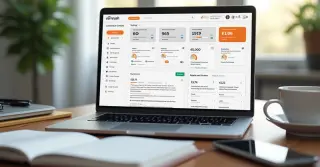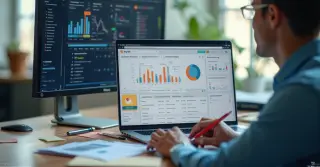Meta Tags For Website

Powerful Meta Tags for Boosting SEO Performance: How to Optimize for Traffic and Visibility
In the ever-evolving world of digital marketing, meta tags for website optimization serve as the underappreciated drivers of results-driven content strategies. These compact snippets of code aren’t visible on your actual web page, yet they communicate directly with search engines, dictating how your content is crawled and catalogued and how it is displayed in search results. Ignoring them may result in significant drops in exposure, especially in crowded niches where SEO drives whether you’re visible or buried. Strategic marketers and webmasters who understand the full potential of meta tags can gain a competitive edge in both rankings and engagement metrics.
When designing a content strategy aimed at results, treating meta title tags as non-negotiable is a necessity. This specific tag is often the first impression users see on the search engine results page (SERP), making it a key driver in your click-through rate (CTR). A well-crafted title tag should be tight, highly relevant to the page content, and feature strategic, high-value keywords that match the queries. Although the common guideline is to limit title tags under 60 characters, the real focus lies in the clarity, appeal, and precision of the text. Digital marketers must balance keyword targeting with natural phrasing that resonates with users.
Another vital component in the meta landscape is the meta description tag. While not a formal ranking signal, it plays a pivotal role in influencing user behavior. Think of the meta description as your content’s elevator pitch. Its purpose is to communicate your content’s value in a way that drives users to click. A powerful meta description should feature relevant language, a clear value proposition, and a natural call to action. Don’t use keyword stuffing or uninspired phrases. Instead, focus on how your content uniquely answers the searcher’s query compared to competing content. SEO writers who understand this can supercharge even average-performing pages, turning them into highly interactive assets.
Going beyond the basics, meta robots tags grant precise governance over how search engines navigate and assess your site. Particularly for those managing large-scale websites or launching new campaigns, the robots meta tag can be used to issue directives such as “nofollow.” These commands tell search engines whether to prioritize your pages in the index and whether to follow the links within. If improperly configured, this can lead to significant missteps such as duplicate content problems or poor indexing. As such, marketers must treat these tags as critical technical assets.
In today’s mobile-first world, the viewport meta tag is no longer just optional—it’s mandatory. This tag ensures your page is responsive across all devices, thereby improving user experience—an indirect factor in Google’s algorithm. Pages that fail to render correctly on smartphones or tablets often suffer from poor session durations, negatively impacting both rankings and conversions. A fluid, device-friendly experience isn’t just about design—it’s a business imperative in a digital world driven by mobile traffic and user intent.
Open Graph meta tags are a social-centric dimension that boost how your content performs on social platforms like other content-sharing networks. These tags allow you to dictate what shows when your content is shared—title, image, summary—creating a visually consistent preview that can boost engagement and referral traffic. Paired with click-worthy thumbnails and engaging copy, Open Graph tags elevate casual shares into lead-generation opportunities or momentum-generating posts.
Likewise, Twitter Cards rely on specific meta tags to present content-rich previews in tweets. These allow your links to appear with media previews, giving your content a more polished look and increasing the likelihood of reposts. With so much content flooding timelines, standing out is vital. For social-first strategies, leveraging Twitter meta tags is a smart way to optimize user interactions across platforms.
Schema markup, typically implemented with RDFa, brings another dimension to meta optimization. This form of structured data allows search engines to interpret page meaning more accurately. For websites featuring reviews, schema tags can activate rich results—snippets that show things like author info and FAQs directly in the SERPs. These enriched formats can drastically improve click-through rates, building both credibility and conversions. For those in competitive niches or eCommerce, schema markup is a powerful tool that delivers both immediate and long-term gains.
A static approach to meta tags is a SEO blind spot. As search engines evolve and user preferences change, ongoing refinement is essential. Platforms like SEMrush help you analyze CTR so you can refine meta content continuously. The best-performing marketing teams iterate relentlessly, not a “set it and forget it” asset. Iterative testing is what separates fast-scaling content strategies from mediocre ones.
Understanding search intent is foundational when crafting meta content. Informational pages should emphasize answers, while product or service pages must promise results. When your meta tags align with user expectations, you’re not just appealing to algorithms—you’re building trust from the start.
Localization is also emerging as a core strategy for global SEO. Using the hreflang meta tag, websites can serve region-specific pages. For international brands or those expanding into new markets, this ensures users see the most relevant variant of your content. Done right, it improves user satisfaction and supports your international SEO strategy.
Finally, collaboration between developers, marketers, and SEO experts is crucial. While marketers handle keyword research, developers ensure the tags are cleanly integrated. Without technical precision, even the best meta content may go unused, resulting in indexation problems. Cross-functional synergy makes meta tags a seamless part of your overall web presence.
Ultimately, winning in digital content today means mastering what’s not visible. Meta tags for website SEO are the invisible force of digital success. When implemented with care, they convert interest into engagement and loyalty.










